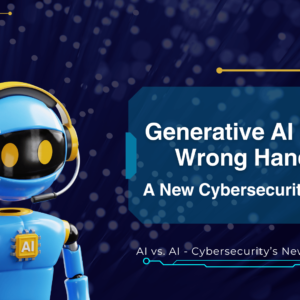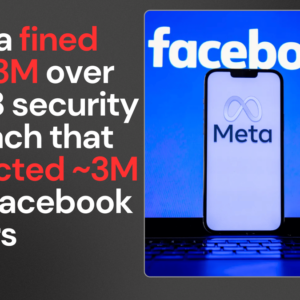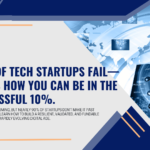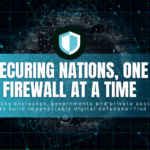Ransomware-as-a-Service (RaaS): How This Growing Threat Puts You at Risk
Have you ever wondered how cybercriminals with limited technical skills can launch sophisticated ransomware attacks? The answer is chilling: Ransomware-as-a-Service (RaaS). This dangerous business model has democratized cybercrime, putting your organization at greater risk than ever before. In fact, ransomware attacks increased by 80% in 2024, with the average ransom payment reaching a staggering $350,000. Let’s dive into this growing threat and discover how you can protect yourself.
What is Ransomware-as-a-Service and How Does It Work?
Ransomware-as-a-Service operates much like legitimate software subscription services, but with a sinister twist. Skilled malware developers create ransomware platforms and then rent them to less technically-savvy criminals (called “affiliates”) for a monthly fee or a percentage of successful ransom payments – typically ranging from 20-30%. This subscription-based model has transformed ransomware from a specialized crime to an accessible, turnkey operation.
The RaaS ecosystem functions with frightening efficiency. Developers handle the complex coding, maintain the ransomware infrastructure, and often provide customer service portals for victims. Affiliates focus on distribution through phishing emails, compromised websites, or exploiting system vulnerabilities. Once deployed, the ransomware encrypts victims’ files, demands payment (usually in cryptocurrency), and the profits are split between developers and affiliates according to their agreement.
What makes RaaS particularly dangerous is its business-like approach. Many RaaS operations include dashboards for tracking campaigns, technical support for affiliates, and even money-back guarantees if the malware fails. Some notorious RaaS groups like LockBit, BlackCat, and Conti operate almost like professional software companies – except their products are designed to cause harm.

The Devastating Consequences of RaaS Attacks
Falling victim to a RaaS attack can be catastrophic for organizations of any size. The immediate impact includes operational disruption as critical systems and data become inaccessible. This downtime alone costs businesses an average of $8,500 per hour, according to recent studies. But the financial damage doesn’t stop there.
Beyond the potential ransom payment, victims face significant recovery costs for system restoration, security upgrades, and forensic investigations. Many organizations also experience long-term reputational damage and customer trust erosion. In regulated industries, RaaS attacks can trigger compliance violations, resulting in hefty fines and legal consequences. The healthcare sector has been particularly hard hit, with 91% of all healthcare organizations experiencing a cybersecurity breach since January 2024.
Perhaps most concerning is the evolving “double extortion” tactic, where attackers not only encrypt data but also steal sensitive information and threaten to publish it unless additional payments are made. This approach puts victims in an impossible position, facing both operational paralysis and potential data exposure.
Protecting Your Business from RaaS Threats
While the RaaS threat is formidable, effective prevention strategies exist. Start with a robust backup system following the 3-2-1 rule: maintain three copies of data on two different media types with one copy stored offsite. Ensure backups are tested regularly and kept isolated from your main network to prevent them from also being encrypted during an attack.
Employee education forms your critical first line of defense. Regular training sessions on recognizing phishing attempts and suspicious links can significantly reduce your vulnerability. Implement a security-aware culture where staff feel comfortable reporting potential threats without fear of reprimand.
Technical protections should include:
- Keeping all systems and software updated with the latest security patches
- Implementing multi-factor authentication across all systems
- Adopting the principle of least privilege for user accounts
- Deploying robust endpoint protection solutions with anti-ransomware capabilities
- Using email filtering systems to block phishing attempts and malicious attachments
- Implementing network segmentation to contain potential breaches
Finally, develop and regularly test an incident response plan specifically addressing ransomware scenarios. This should include communication protocols, technical response procedures, and decision frameworks regarding ransom payments. Many cybersecurity experts and law enforcement agencies discourage paying ransoms, as payment encourages future attacks and doesn’t guarantee data recovery.
RaaS Trends and Predictions for 2026 and Beyond
The RaaS landscape continues to evolve at an alarming pace. Looking ahead, experts predict several troubling trends. First, we’re seeing increased targeting of cloud infrastructure and managed service providers, allowing attackers to compromise multiple organizations through a single breach. This “supply chain” approach dramatically increases the efficiency and profitability of attacks.
AI-powered ransomware represents another emerging threat. Machine learning algorithms are being employed to identify high-value targets, optimize ransom amounts based on victim profiles, and even generate convincing spear-phishing emails. By March 2025, security researchers had already identified several RaaS operations incorporating basic AI capabilities.
Industry analysts also predict greater collaboration between RaaS groups and nation-state actors, blurring the lines between criminal and geopolitical motivations. This partnership provides RaaS operations with sophisticated techniques while offering governments plausible deniability for attacks on foreign entities.

Staying Ahead of the RaaS Threat
Ransomware-as-a-Service has fundamentally changed the cybersecurity landscape, making sophisticated attacks accessible to a wider range of threat actors. By understanding how RaaS works, implementing robust preventative measures, and staying informed about emerging trends, you can significantly reduce your risk of becoming the next victim.
Remember that cybersecurity is not a one-time effort but an ongoing process requiring vigilance, adaptation, and commitment. The threat landscape will continue to evolve, making it essential to regularly reassess your defenses and update your protection strategies.
Has your organization taken the necessary steps to protect against RaaS attacks? The time to act is now – before you find yourself facing an encrypted network and an impossible choice.












